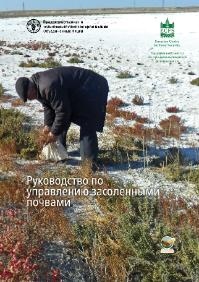Location
A unified Thai kingdom was established in the mid-14th century. Known as Siam until 1939, Thailand is the only Southeast Asian country never to have been colonized by a European power. A bloodless revolution in 1932 led to the establishment of a constitutional monarchy. In alliance with Japan during World War II, Thailand became a US treaty ally in 1954 after sending troops to Korea and later fighting alongside the US in Vietnam. Thailand since 2005 has experienced several rounds of political turmoil including a military coup in 2006 that ousted then Prime Minister THAKSIN Chinnawat, followed by large-scale street protests by competing political factions in 2008, 2009, and 2010. THAKSIN's youngest sister, YINGLAK Chinnawat, in 2011 led the Puea Thai Party to an electoral win and assumed control of the government. A blanket amnesty bill for individuals involved in street protests, altered at the last minute to include all political crimes - including all convictions against THAKSIN - triggered months of large-scale anti-government protests in Bangkok beginning in November 2013. In early May 2014 YINGLAK was removed from office by the Constitutional Court and in late May 2014 the Royal Thai Army staged a coup against the caretaker government. Then head of the Royal Thai Army, Gen. PRAYUT Chan-ocha, was appointed prime minister in August 2014. The interim military government created several interim institutions to promote reform and draft a new constitution. Elections are tentatively set for mid-2017. King PHUMIPHON Adunyadet passed away in October 2016 after 70 years on the throne; his only son, WACHIRALONGKON Bodinthrathepphayawarangkun, ascended the throne in December 2016. Thailand has also experienced violence associated with the ethno-nationalist insurgency in its southern Malay-Muslim majority provinces. Since January 2004, thousands have been killed and wounded in the insurgency.
Thailand is a constitutional monarchy.
Source: CIA World Factbook
Members:
Resources
Displaying 6 - 10 of 104Legislation on water users, organizations
A robust regulatory framework for the corporate governance of water user's organizations is a fundamental ingredient of irrigation management transfer policies. The present publication offers a comparative analysis of the contemporary legislation of a wide variety of countries, providing the needed regulatory framework for water user's organizations to function and grow.
Irrigation in the Countries of the Former Soviet Union in figures
FAO's AQUASTAT programme, initiated in 1993, aims to meet the demand for information on water resources and use at regional level, with particular emphasis on irrigation and drainage. The objectives of the programme are to collect and present, in a systematic way, data on rural water use at country level.
With an area of more than 22 million km², the former Soviet Union (FSU) covers about 17% of the world and presents a wide range of climatic and physiographic situations, from the arctic zones of Siberia to the arid deserts of Central Asia.Irrigation in the Countries of the Former Soviet Union in figures
FAO's AQUASTAT programme, initiated in 1993, aims to meet the demand for information on water resources and use at regional level, with particular emphasis on irrigation and drainage. The objectives of the programme are to collect and present, in a systematic way, data on rural water use at country level.
With an area of more than 22 million km², the former Soviet Union (FSU) covers about 17% of the world and presents a wide range of climatic and physiographic situations, from the arctic zones of Siberia to the arid deserts of Central Asia.Irrigation in the Countries of the Former Soviet Union in figures
FAO's AQUASTAT programme, initiated in 1993, aims to meet the demand for information on water resources and use at regional level, with particular emphasis on irrigation and drainage. The objectives of the programme are to collect and present, in a systematic way, data on rural water use at country level.
With an area of more than 22 million km², the former Soviet Union (FSU) covers about 17% of the world and presents a wide range of climatic and physiographic situations, from the arctic zones of Siberia to the arid deserts of Central Asia.Руководство по управлению засоленными - почвами План имплементации Евразийского почвенного партнерства
Настоящее пособие подготовлено для проведения школы-семинара по
инновационным методам мелиорации и использования засоленных почв, которыйсостоится в Харькове, Украина, в сентябре 2017 года. Этот семинар проводится врамках выполнения Плана имплементации Евразийского почвенного партнерства,которое является субрегиональным партнерством в рамках Глобального почвенногопартнерства. Основными целями Глобального почвенного партнерства (ГПП)и Региональных почвенных партнерств (РПП) являются разработка глобальных



